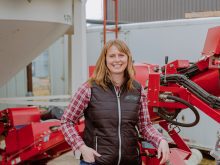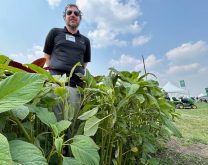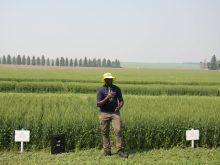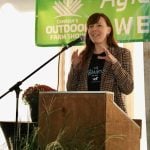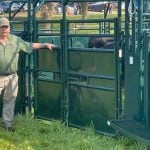BOISSEVAIN, Man. – The farming lifestyle has been ingrained into the skin of the Albrecht men almost the same way a sailor sports a tattoo.
After 37 years of farming, the last eight with his eldest son Darryl, Walter Albrecht still can’t get over the miracle of spring.
“This lifestyle is like a dream.”
Adds Darryl, 28: “Last week, when it’s plus 10 and the water’s running and it’s warm, it just rejuvenates you.
“You’re glad to be on the farm smelling the fresh air and seeing the geese coming back and not in the city sitting in an office looking out,” he said during an interview at the family’s Boissevain-area farm.
Read Also

How a cycling theory can help ranchers boost profits
By focusing on relatively simple, small changes, farmers and ranchers can see big results
It’s the time of year when Darryl, Walter and 20-year old Ryan Albrecht split their time between being outside with the cattle and inside making decisions about the coming year’s crop.
They’ll seed 800 of their 1,600 acres to canola this year. That’s more than usual, but Darryl said in a three-year rotation with wheat and peas, that’s how it worked out.
“We’re not pushing any land into canola,” Darryl said.
With the price of wheat and pulses falling, they’re not disappointed, even though most farmers will think the same thing.
“People say all you need are one or two weather scares and canola prices can come up pretty fast,” Darryl said.
It could make it tough to market a large crop. An elevator just over the border in North Dakota usually buys most of the canola produced on the Albrechts’s farm. This year, they might look elsewhere.
“I heard some numbers today that North Dakota and Minnesota are supposed to be growing quite a few acres,” Darryl said.
The Albrechts have found a way to loosen the squeeze that rising input costs have put on the grain operation.
This year, they plan to zero till all but their 250 alfalfa acres. Besides the canola, they’ll seed 340 acres to wheat, 115 to peas and 300 to barley used for cattle silage.
An unintentional experiment last year made up their minds that zero till is the way to go.
Their tractor broke down in fall and 400 acres were never tilled.
“We were pretty happy to see that with only four inches of rain all summer, we still got a decent crop of it,” said Darryl.
They might apply extra chemicals, but the real savings are in reduced machinery and fuel costs.
They do not want to skimp on fertilizer or chemical inputs. It’s not worth the risk, said Darryl: “You still need the same amount to produce a crop and at this point we’re not looking at sacrificing that and risk not getting a crop.”
The Albrechts also run a 180-head cow/calf operation and do some custom haying for a nearby feedlot. They’re considering expanding by backgrounding up to 500 calves or doing more custom silaging.
“We see a better future in the cattle industry than grain in our area and on our farm,” Darryl said.
The stakes are too high to expand the grain operation.
“You need to upgrade equipment every five or seven years and with the grain farm, I just can’t do that any more,” Walter said.
Are they optimistic going into seeding this year?
“If it rains, it’s sunny and windy, then yes,” Darryl said.
Even after a recent blizzard dumped 80 centimetres of snow on southwestern Manitoba, soil moisture is the greatest concern.
Walter, 55, plans to retire in five years and Ryan, who works for his father and brother in the summers, will take his place.





